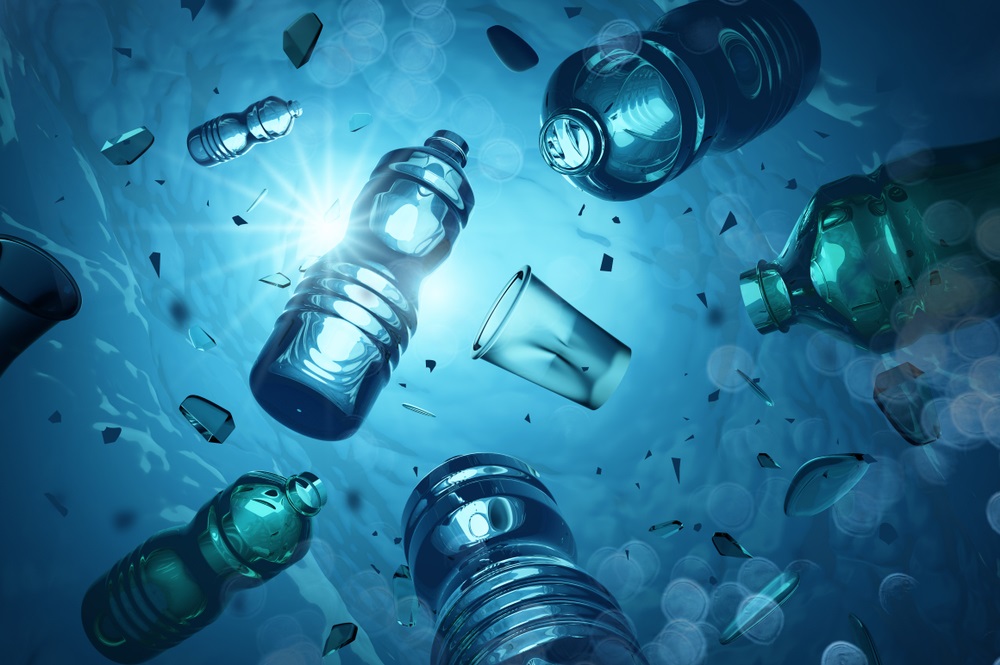A recent Columbia University study has uncovered a disturbing reality: a single liter of bottled water may harbor an estimated average of 240,000 pieces of microplastics, surpassing previous estimates of microplastic levels by 10 to 100 times. This revelation sheds light on microscopic microplastics and even smaller nanoplastics, sparking significant concerns for human health and the environment.
Published in the Proceedings of the National Academy of Sciences, the study examined three prominent bottled water brands in the United States. The research at an exceptionally small scale of 100 nanometers revealed a spectrum of 110,000 to 370,000 plastic fragments per liter, with 90% being nanoplastics and 10% microplastics.
Co-author Beizhan Yan, an environmental chemist, emphasized the groundbreaking nature of the findings, stating, “This opens a window where we can look into a world that was not exposed to us before.”
The study draws attention to the prevalence of microplastics in various aspects of daily life, including soil, drinking water, food, and even polar ice. These minute plastic particles originate from the breakdown of larger plastic items, posing potential risks to human health and ecosystems.
Researchers identified the plastic types present in bottled water, with a prevalence of polyethylene terephthalate (PET), commonly used in manufacturing water bottles. Additionally, a higher quantity of polyamide, a form of nylon, was noted, possibly originating from plastic fibers used in water purification processes before bottling.
Using a novel technique called stimulated Raman scattering (SRS) microscopy, the research team conducted a comprehensive data analysis, delving deep into these minute particles. Lead author Naixin Qian, a graduate student in chemistry, emphasized the critical nature of the situation, stating, “The smaller things get, the more of them there are.”
Microplastic Levels: Nanoplastics and Neurological Impact 2

A Duke University-led study reveals a concerning connection between nanoplastics and neurological health, particularly Parkinson’s disease and related dementias. The investigation, spanning different laboratory models, including live mice, discovered that environmental nanoplastics interact with a brain protein, α-synuclein, triggering fibril formation and aggregation. This interaction was observed in test tubes, cultured neurons, and mouse models, emphasizing potential risks associated with increasing nanoplastic contaminants.
Microplastic Levels: Key Findings 2
- The study suggests an emergent toxin challenge related to Parkinson’s disease and dementia due to the interaction between nanoplastics and α-synuclein.
- Increased plastic production worldwide has led to microplastic contaminants in water and food supplies, with single-use polystyrene products contributing significantly.
- Anionic polystyrene nanoplastics in disposable cups and cutlery bind to α-synuclein, promoting fibril formation and pathology in neurons.
- Tight bonds formed between nanoplastics and α-synuclein within the lysosome, a neuron area, were observed, exacerbating α-synuclein pathology in mouse models.
- Questions remain about human interactions and the role of different plastic types.
Microplastic Levels: Health Implications 2
The study’s surprising findings highlight the urgent need to evaluate the increasing presence of neoplastic contaminants in connection with Parkinson’s disease and dementia risk and progression. Although monitoring technology is early, efforts are crucial to understanding and mitigating potential health risks associated with nanoplastics.
Microplastic Levels: Conclusion 1,2
In conclusion, this groundbreaking study sheds light on the intricate composition of particles in supposedly pure water, revealing a pervasive presence of plastics with significant implications for human health and the environment. The innovative use of SRS microscopy and data-driven algorithms provides crucial insights into the microscopic realm of nanoplastics, urging further research and heightened awareness about plastic pollution. As the study unravels the impact of nanoplastics on neurological health, a pressing need emerges for intensified research and monitoring to safeguard against potential risks while maintaining the daily conveniences afforded by plastics. The results underscore the imperative to explore the potential role of anionic nanoplastics in Parkinson’s disease, emphasizing the urgency for comprehensive action to address this growing concern.
Disclaimer Statement : This information is from a third-party health news channel. The opinions expressed here belong to the respective authors/entities and do not reflect the views of Docquity. Docquity does not assure, endorse, or vouch for any of the content and bears no responsibility for it in any way. It is essential to take all necessary steps to ensure the information and content provided are accurate, current, and verified. Docquity disclaims any express or implied warranties related to the report and its contents.
Reference
- Johnson A. Bottled Water Contains Hundreds Of Thousands Of Potentially Toxic Tiny Plastics, Study Finds [Internet]. Forbes. [cited 2024 Jan 10]. Available from: https://www.forbes.com/sites/ariannajohnson/2024/01/08/bottled-water-contains-hundreds-of-thousands-of-potentially-toxic-tiny-plastics-study-finds/?sh=459862ca3084
- Liu Z, Arpine Sokratian, Duda AM, et al. Anionic nanoplastic contaminants promote Parkinson’s disease–associated α-synuclein aggregation. Science Advances. 2023 Nov 15;9(46). DOI: 10.1126/sciadv.adi8716
About Docquity
If you need more confidence and insights to boost careers in healthcare, expanding the network to other healthcare professionals to practice peer-to-peer learning might be the answer. One way to do it is by joining a social platform for healthcare professionals, such as Docquity.
Docquity is an AI-based state-of-the-art private & secure continual learning network of verified doctors, bringing you real-time knowledge from thousands of doctors worldwide. Today, Docquity has over 400,000 doctors spread across six countries in Asia. Meet experts and trusted peers across Asia where you can safely discuss clinical cases, get up-to-date insights from webinars and research journals, and earn CME/CPD credits through certified courses from Docquity Academy. All with the ease of a mobile app available on Android & iOS platforms!






